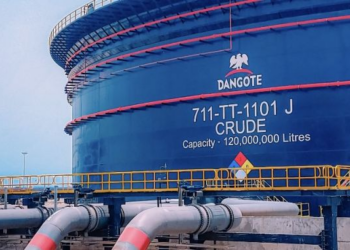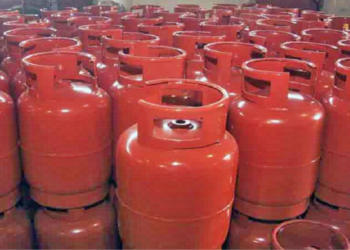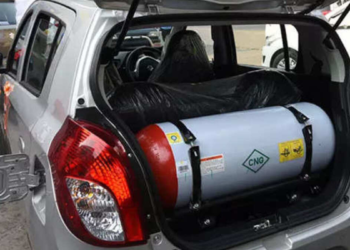Excerpt; Kelvin Emmanuel, the Chief Executive Officer of Dairy Hills and Energy Markets Analyst told Nairametrics that building a CNG mother station will cost $1.2 million on average, with several factors in mind.
The Bola Ahmed Tinubu administration has said it is committed to developing compressed natural gas (CNG) infrastructure across the country, to create a viable market for CNG as an alternative to premium motor spirit (PMS) also known as petrol.
In a detailed plan revealed by the Nigerian National Petroleum Company Limited (NNPCL) in July 2023, the Federal Government said it has partnered with Nipco Gas Limited to construct 35 state-of-the-art CNG stations nationwide, including three (3) Mother stations.
Kelvin Emmanuel, the Chief Executive Officer of Dairy Hills and Energy Markets Analyst told Nairametrics that building a CNG mother station will cost $1.2 million on average, with several factors in mind.
If the NNPCL-Nipco partnership plans to build three mother stations, then going by Emmanuel’s analysis, they will have to spend an average of $3.6 million to set up only the mother stations, alongside other expenses for the state-of-the-art CNG stations across the country.
Emmanuel also addressed other related gas issues in Nigeria with Nairametrics in this interview…
NAIRAMETRICS: What infrastructure do states like Lagos and Kano need when it comes to making CNG readily available to end consumers?
Kelvin Emmanuel: Lagos is already served by the Lagos-Escravos pipeline, which facilitates the supply of methane gas from Warri through Ondo State.
This gas is then channelled into export pipelines like the West Africa Gas Pipeline, with its route passing through Badagry.
In contrast, Kano’s situation is distinct. The realization of its methane gas supply hinges upon the successful construction of the 614-kilometre high-pressure internal transmission pipeline.
Managed by the Nigeria Gas Infrastructure Company (NGIC), this pipeline is intended to establish a connection between Ajaokuta-Kaduna and Kano. Notably, the pipeline’s second phase aims to extend its reach to Gusau.
The significance of this infrastructure expansion becomes evident when considering its purpose: to ensure a reliable supply of methane gas to meet both power generation and transportation requirements in Kano.
This assumes even greater importance given the escalating demand for cleaner energy sources and more effective transportation solutions.
NAIRAMETRICS: What is the average cost of building a mother CNG station and associated infrastructure in one location?
Kelvin Emmanuel: The construction of a mother station capable of supplying up to sixteen (16) CNG trucks, each with an average skid capacity of 7,000 standard cubic meters (equivalent to 6,750 litres) per truck, comes at an estimated cost of approximately $1.2 million on average.
This projected expense covers various aspects of setting up the mother station, including infrastructure, equipment, and operational considerations.
The station is designed to facilitate refuelling the specified number of Compressed Natural Gas (CNG) trucks, with each truck having an average capacity of 7,000 standard cubic meters or 6,750 litres.
It’s worth noting that this cost estimate is subject to factors such as location, local regulations, the scale of the station, and technological advancements that might influence construction and operational expenses.
The investment in such a mother station reflects the growing emphasis on cleaner fuel alternatives like CNG and the infrastructure required to support their adoption in the transportation sector.
NAIRAMETRICS: What will it cost the average car owner in Nigeria to convert their private car to run on CNG?
Kelvin Emmanuel: Transforming an engine’s fuel source from combustion to gas through retrofitting is an endeavour that entails an average cost of approximately $300 for car owners. This financial outlay covers the expenses associated with the necessary modifications and adjustments to enable the engine to run on gas.
For those considering embarking on this conversion journey, it’s imperative to delve into several significant factors that can greatly influence the feasibility and benefits of such a modification.
These factors extend beyond mere financial consideration and encompass crucial aspects that warrant thoughtful consideration.
One of the foremost factors deserving attention is the age of the vehicle. Older cars may present unique challenges when retrofitting for gas use.
Efficiency losses over time can impact the overall performance of an older engine, potentially affecting the potential benefits gained from the conversion.
Consequently, assessing the age of the car becomes a pivotal step in evaluating whether the retrofitting process would be a prudent investment.
An elemental consideration involves understanding the energy density of gas in comparison to petrol. While gas is recognized for its cleaner combustion and environmental advantages, it does possess a lower energy density when measured against conventional petrol.
This disparity implies that a larger volume of gas would be required to achieve the same level of energy output as a smaller quantity of petrol.
Consequently, the trade-off between environmental benefits and potential changes in fuel consumption should be weighed.
NAIRAMETRICS: Is it realistic for all states to set up CNG infrastructure and receive a steady supply of CNG from 2024, as stated by the Tinubu administration?
Kelvin Emmanuel: The existing challenge surpasses the mere initiation of CNG infrastructure. The crux of the matter rests upon NNPC’s Nigeria Gas Infrastructure Company (NGIC) and its mission to expand the gas pipeline network across the country.
A notable example is the 128-kilometer Obiafu-Obrikom-Oben (OB3) pipeline, which spans all the way to Edo State. For effective gas utilization, states are in need of City Gates linked to internal high-pressure transmission pipelines. These strategic access points enable the controlled release and extraction of gas.
Yet, the overarching solution demands more than surface-level actions. In the absence of comprehensive institutional reforms capable of attracting the necessary investments to bolster capacity, particularly concerning critical infrastructure, the mere establishment of CNG mother-and-daughter stations becomes performative in nature – a gesture aimed at appeasing public sentiment rather than driving substantial change.
NAIRAMETRICS: Where do current gas supply challenges factor into all these plans by the FG?
Kelvin Emmanuel: The issue surrounding the gas supply problem is multi-faceted, stemming from various factors that have contributed to its persistence.
A primary concern lies in the reluctance of the Federal Government (FG) to deregulate gas prices, which has repercussions throughout the supply chain.
This has hindered the establishment of a competitive market environment and has impeded the efficient functioning of the gas sector. Another significant aspect of this challenge relates to the insufficient expansion of manifold infrastructure for the capture and aggregation of gas.
The inadequacy of this infrastructure has led to significant losses in potential gas resources that could have been harnessed for various purposes.
To address this, substantial investments are required to enhance the capacity of manifold infrastructure, ultimately facilitating the effective trapping and collection of gas.
One notable factor that has contributed to the gas supply problem is the dearth of investments necessary to elevate piping infrastructure from its current span of 2,000 kilometres to a more robust and expansive network spanning 7,000 kilometres.
The deficiency in this extended network limits the efficient transportation of gas across the country, hindering its accessibility and distribution to areas with burgeoning energy demands.
Also, the escalation of costs associated with Engineering, Procurement, and Construction (EPC) activities, which play a pivotal role in Final Investment Decisions (FIDs), has exacerbated the challenge.
These escalating costs have deterred potential investors and stakeholders from committing to projects to bolster the gas supply chain.
Adding to the complexity is the substantial expense tied to importing the necessary 20-40-inch diameter steel required for the construction of high-pressure transmission pipes.
Notably, Nigeria lacks domestic production of steel from pig-iron ore, a resource abundantly available within the country.
This reliance on imported steel has significantly inflated the overall costs of gas infrastructure development and has contributed to the existing supply predicament. In essence, the gas supply predicament in Nigeria is a result of the interplay between various interconnected factors.
The government’s hesitance to deregulate prices, the insufficiency of manifold infrastructure, the need for increased investments in piping infrastructure, the inflation of EPC costs for FIDs, and the reliance on imported steel are all contributing elements.
Addressing this multifaceted issue necessitates a comprehensive approach that considers the intricate relationships between these factors and seeks integrated solutions for a sustainable resolution.






















Basically the cost of convertion of retrofitting to CNG is effective for aged cars between 2-5 years, its just exclusively meant for some reserved persons